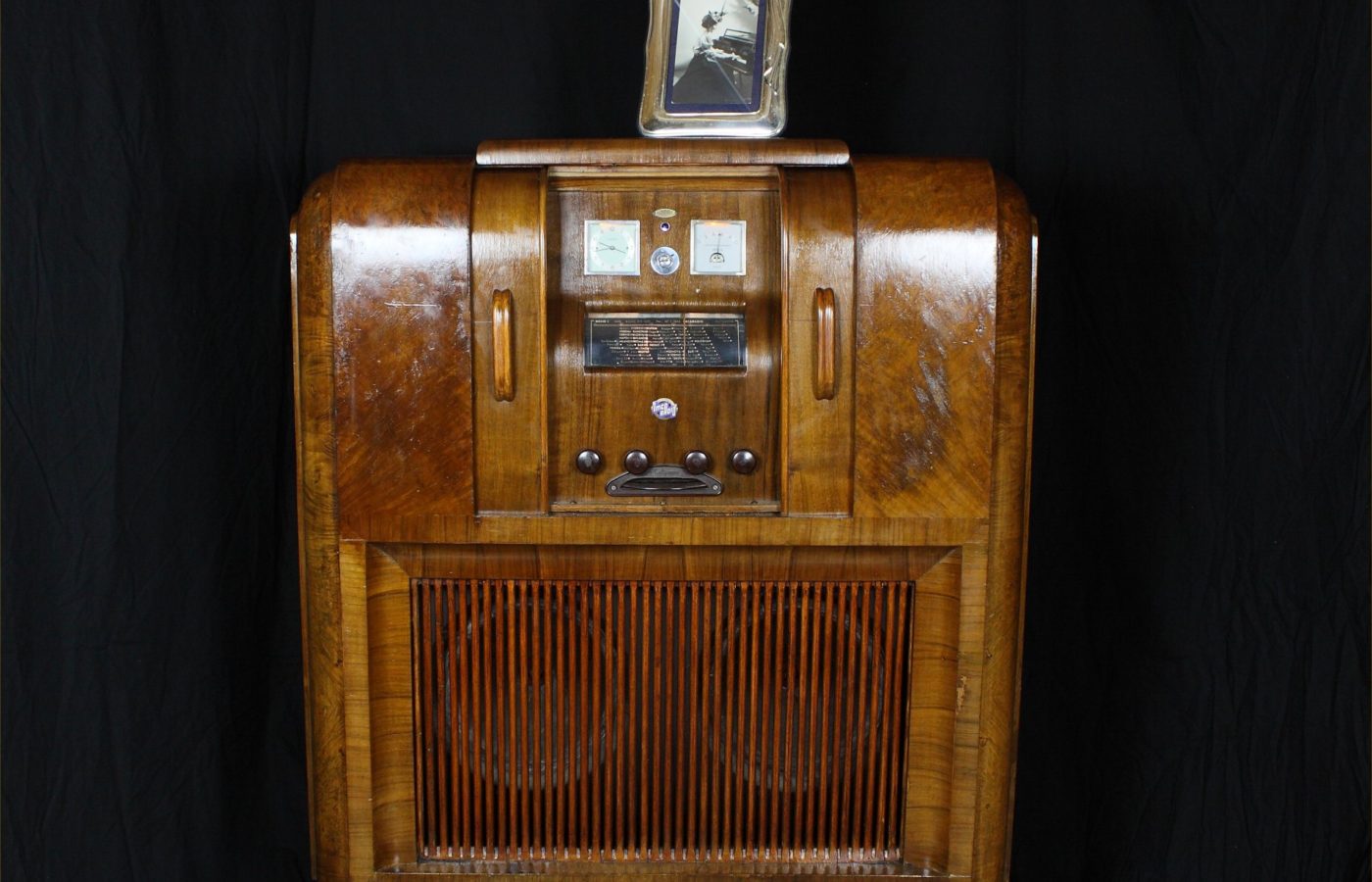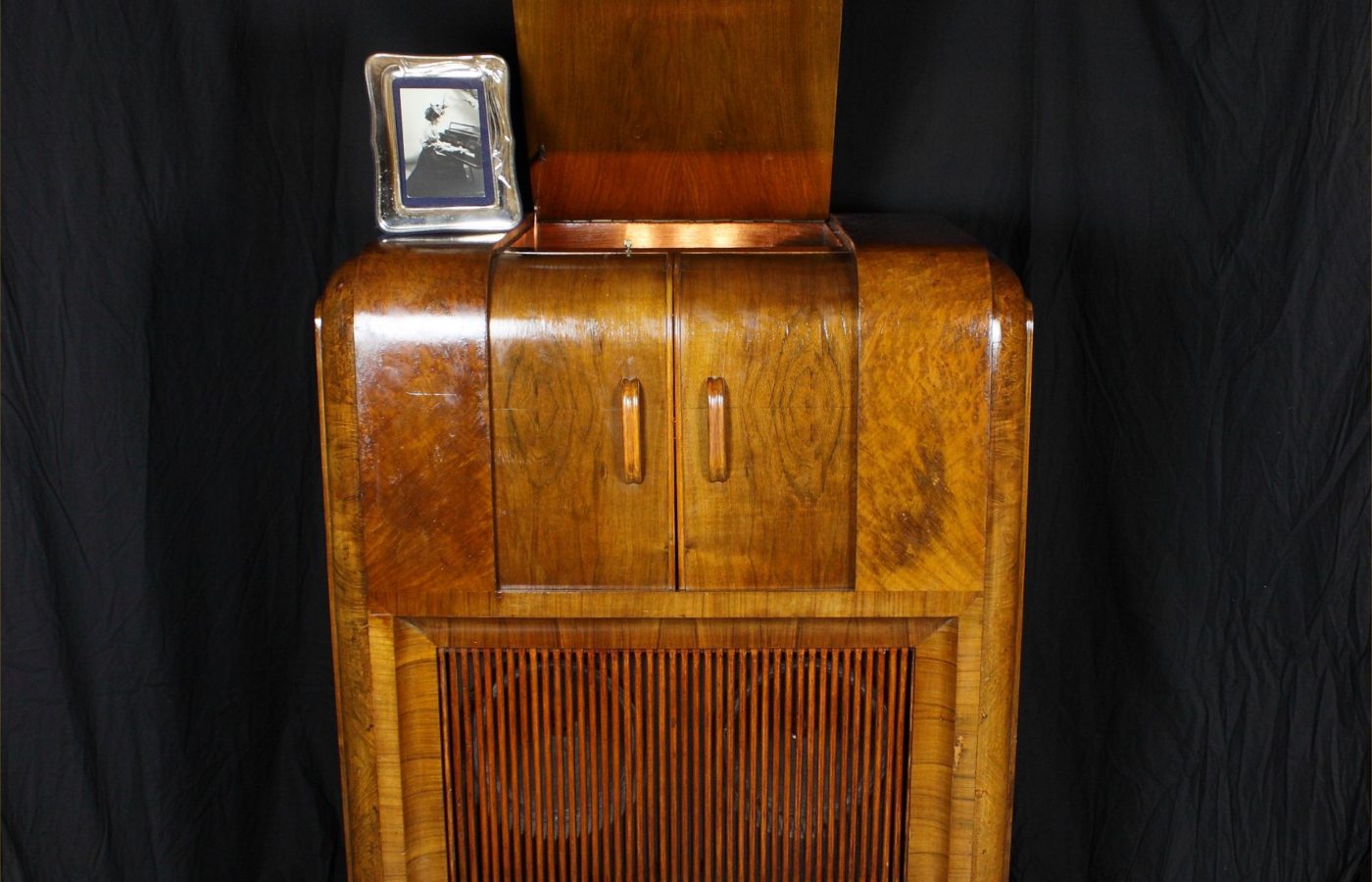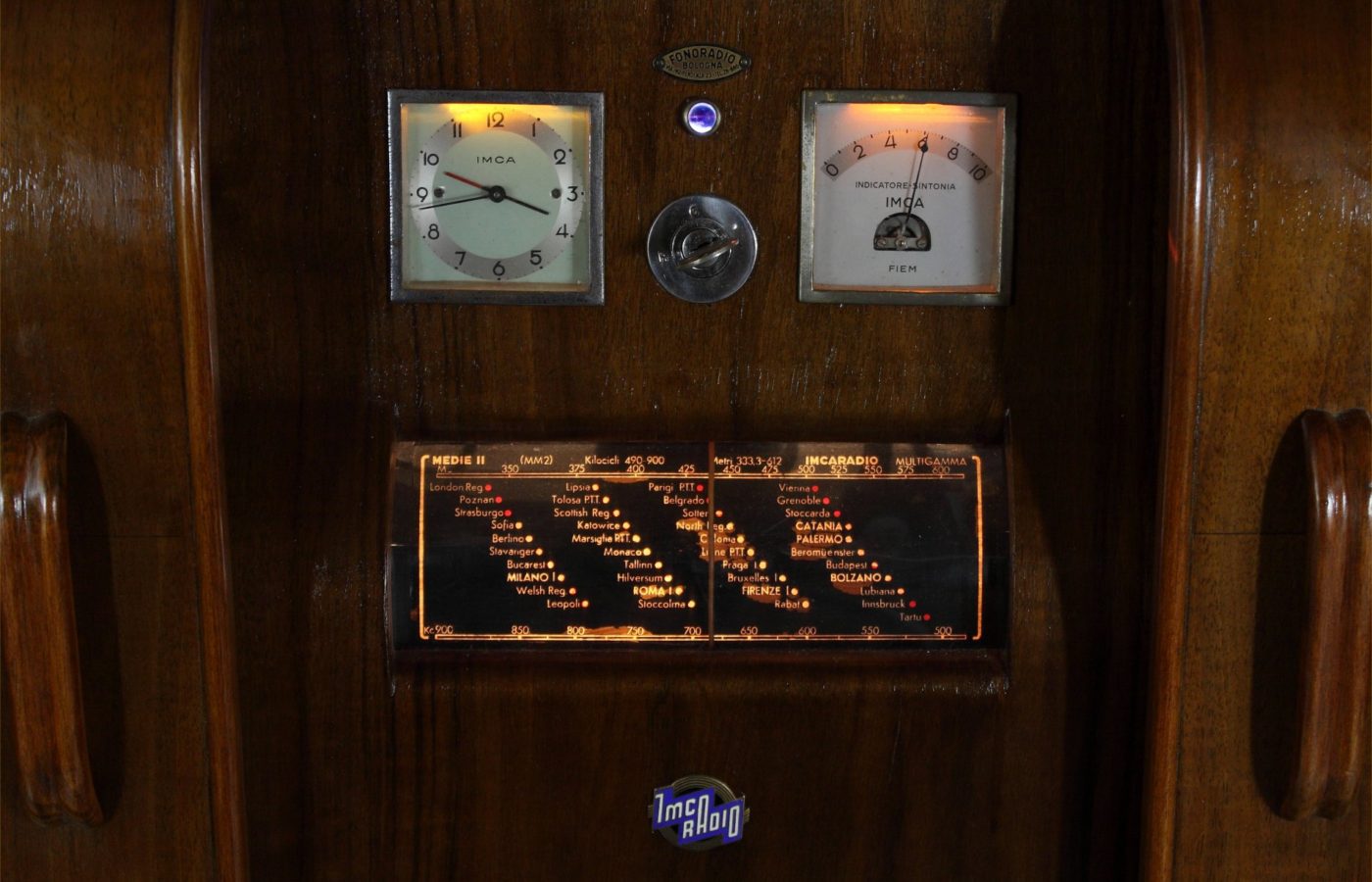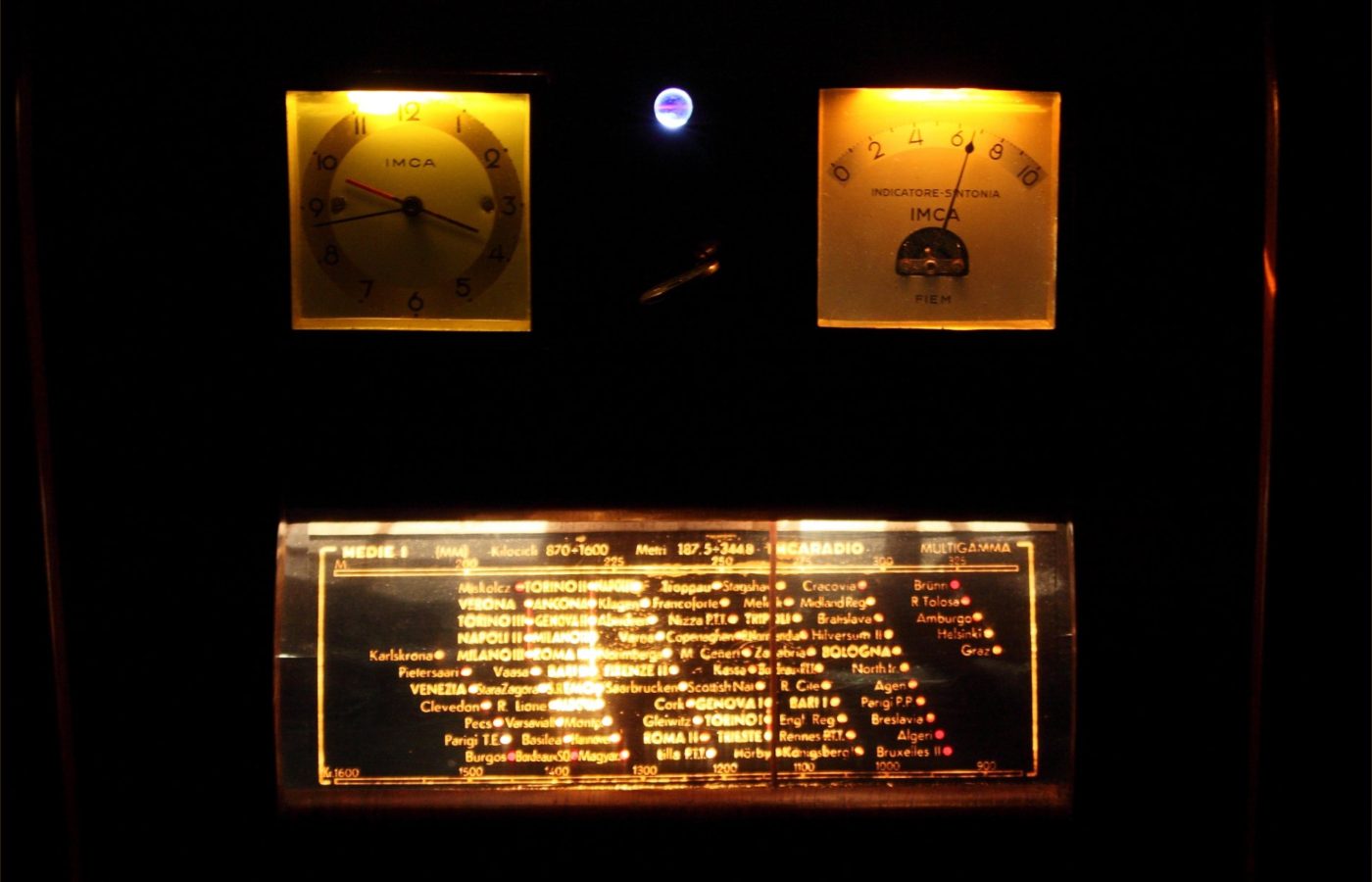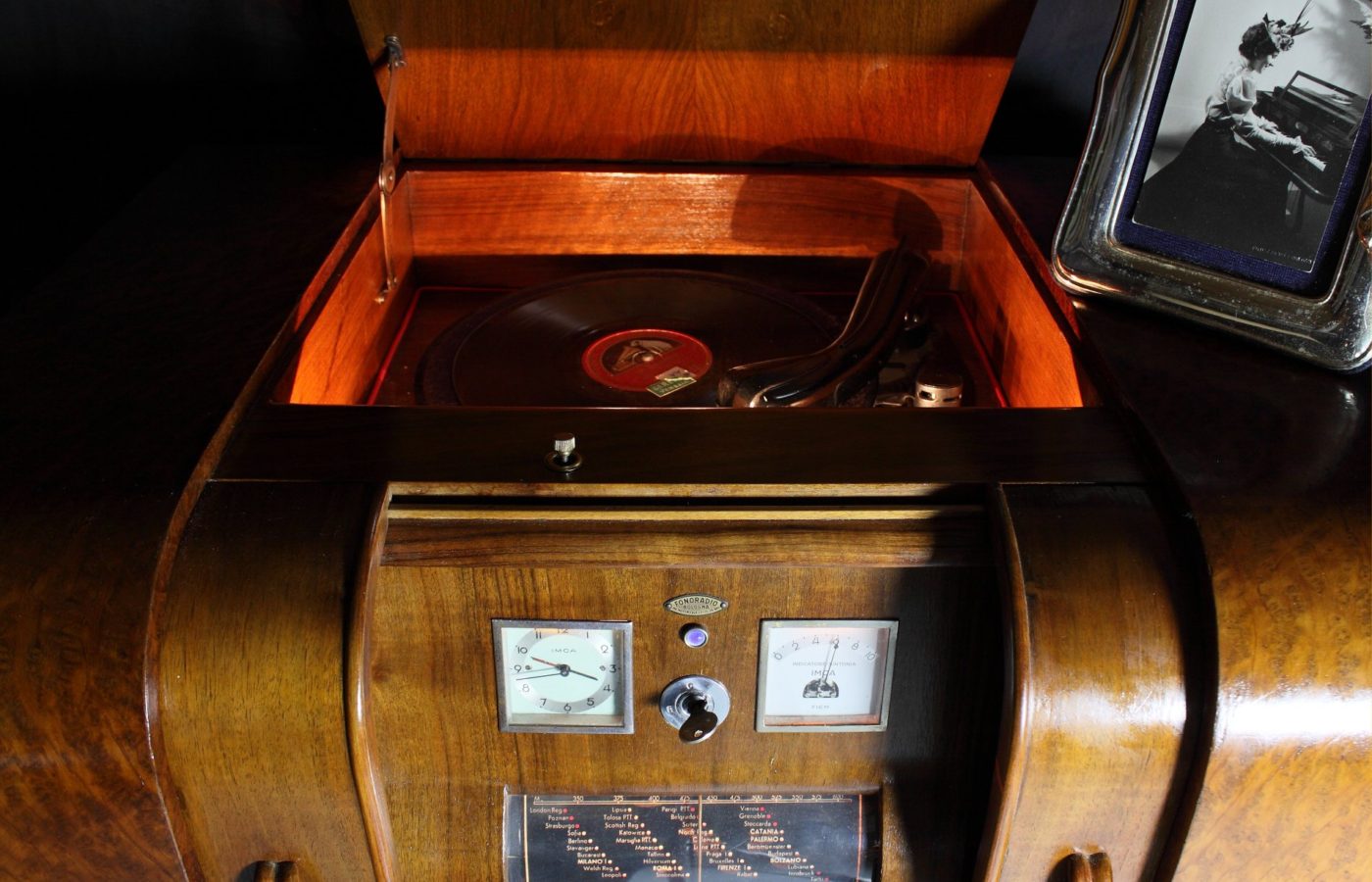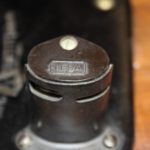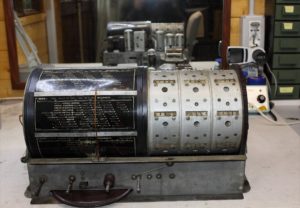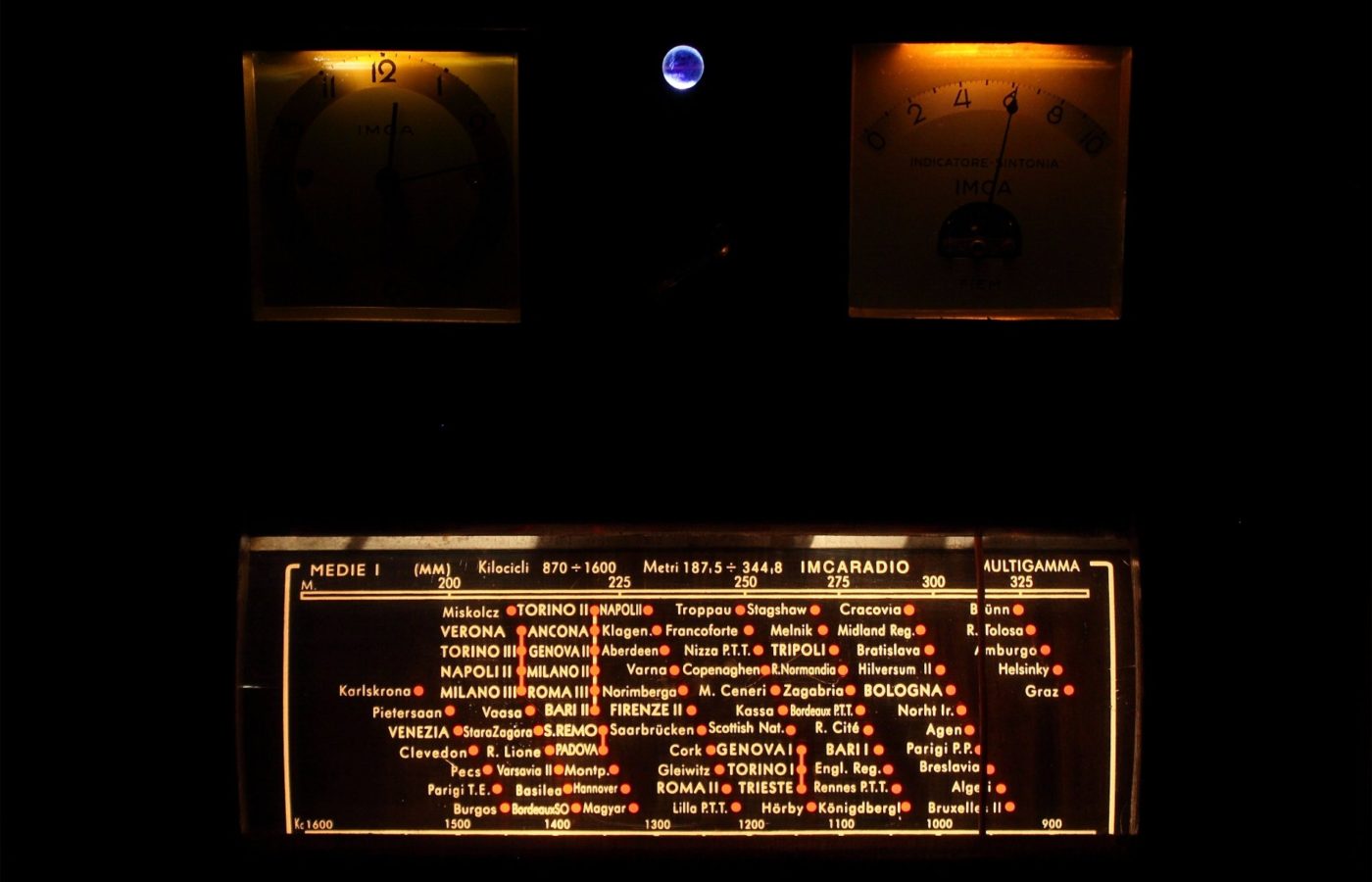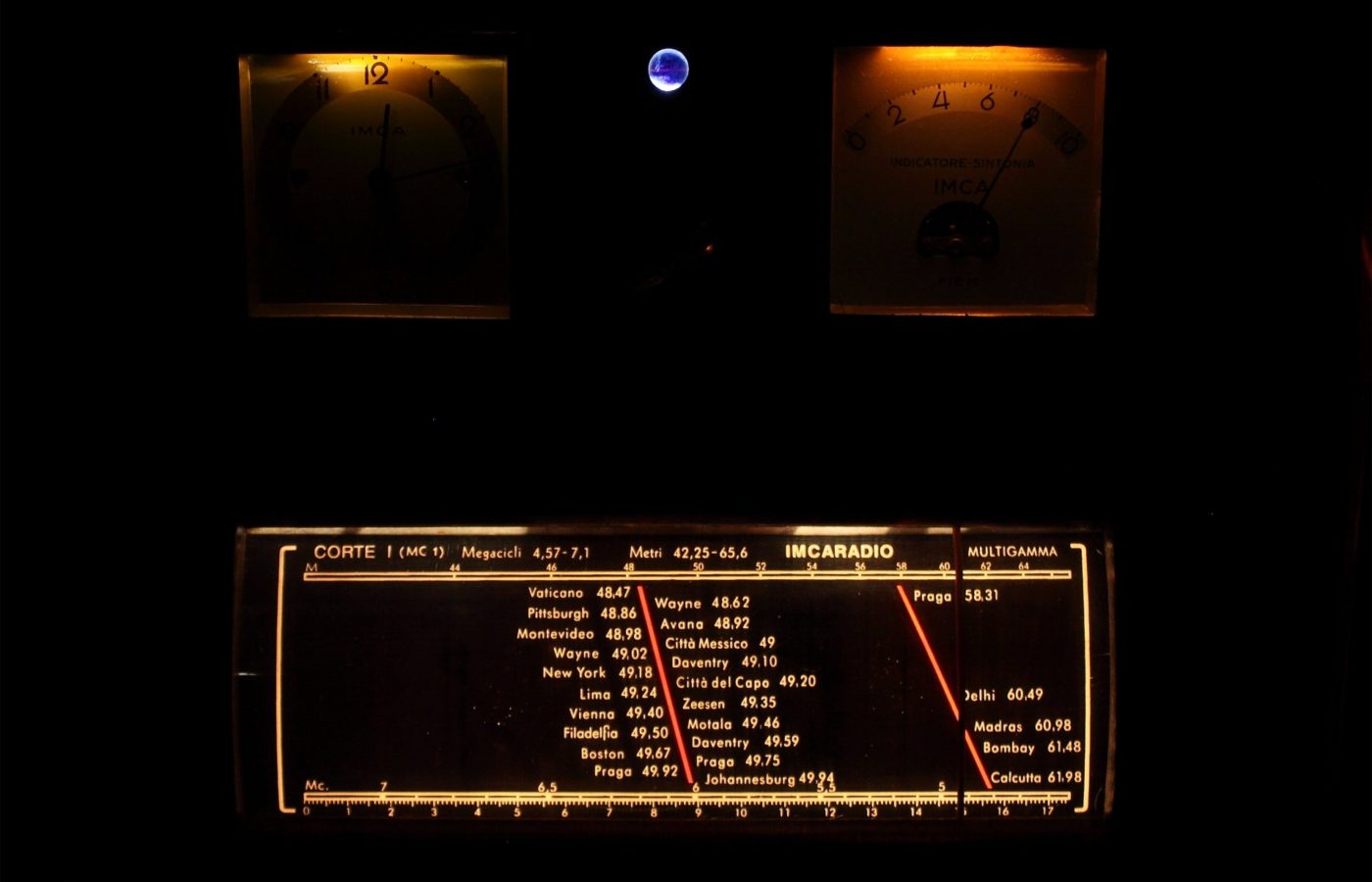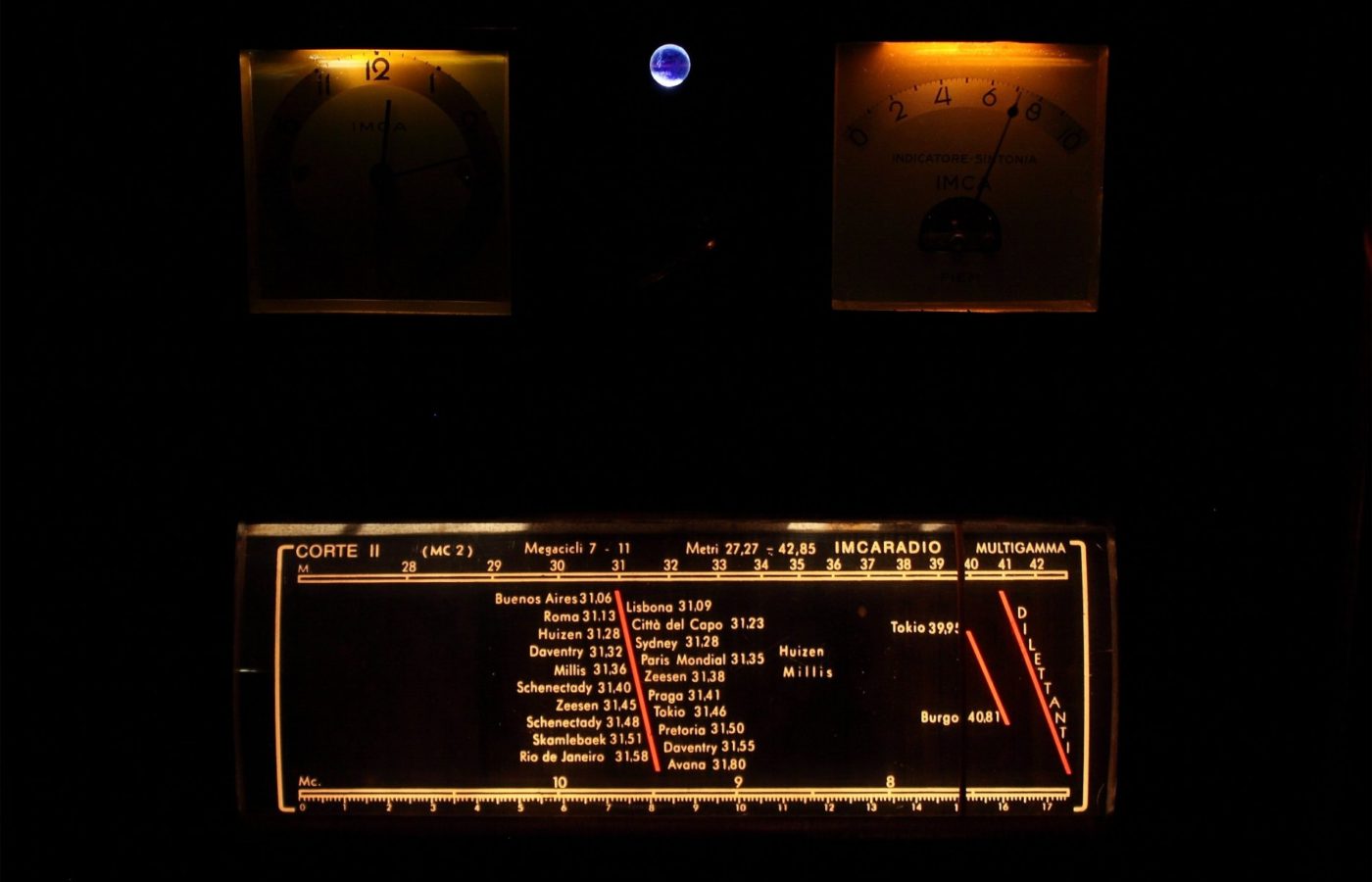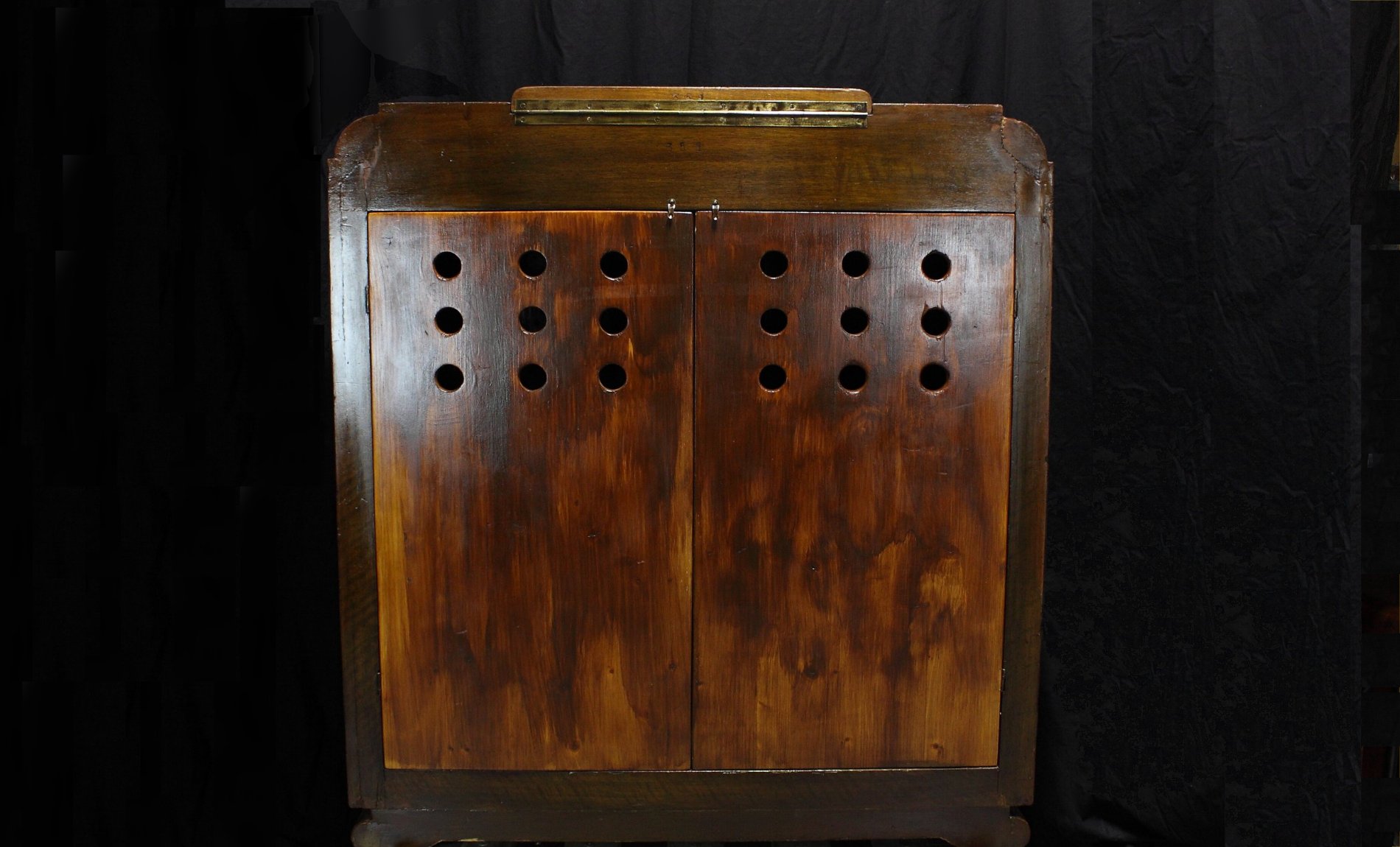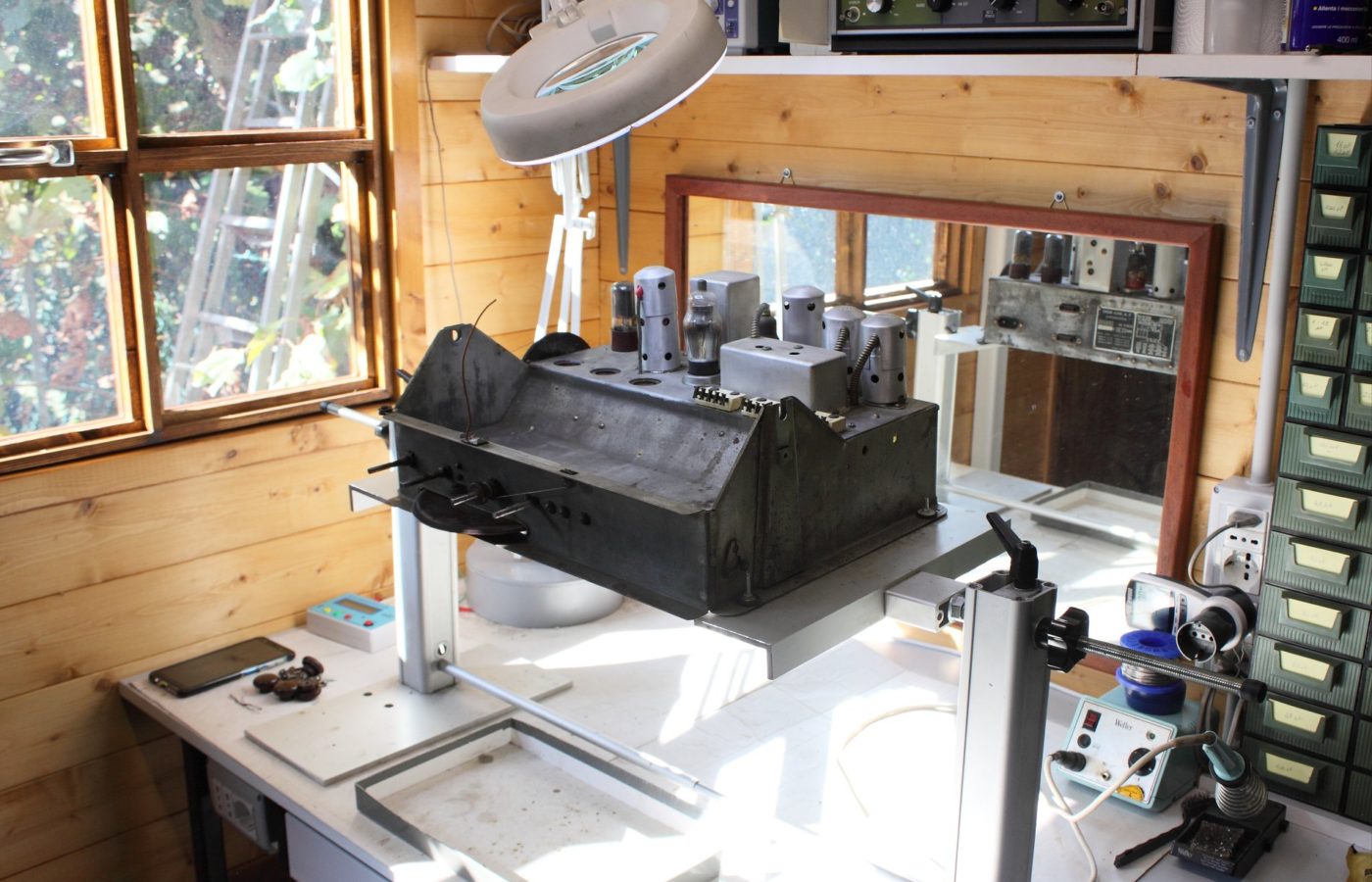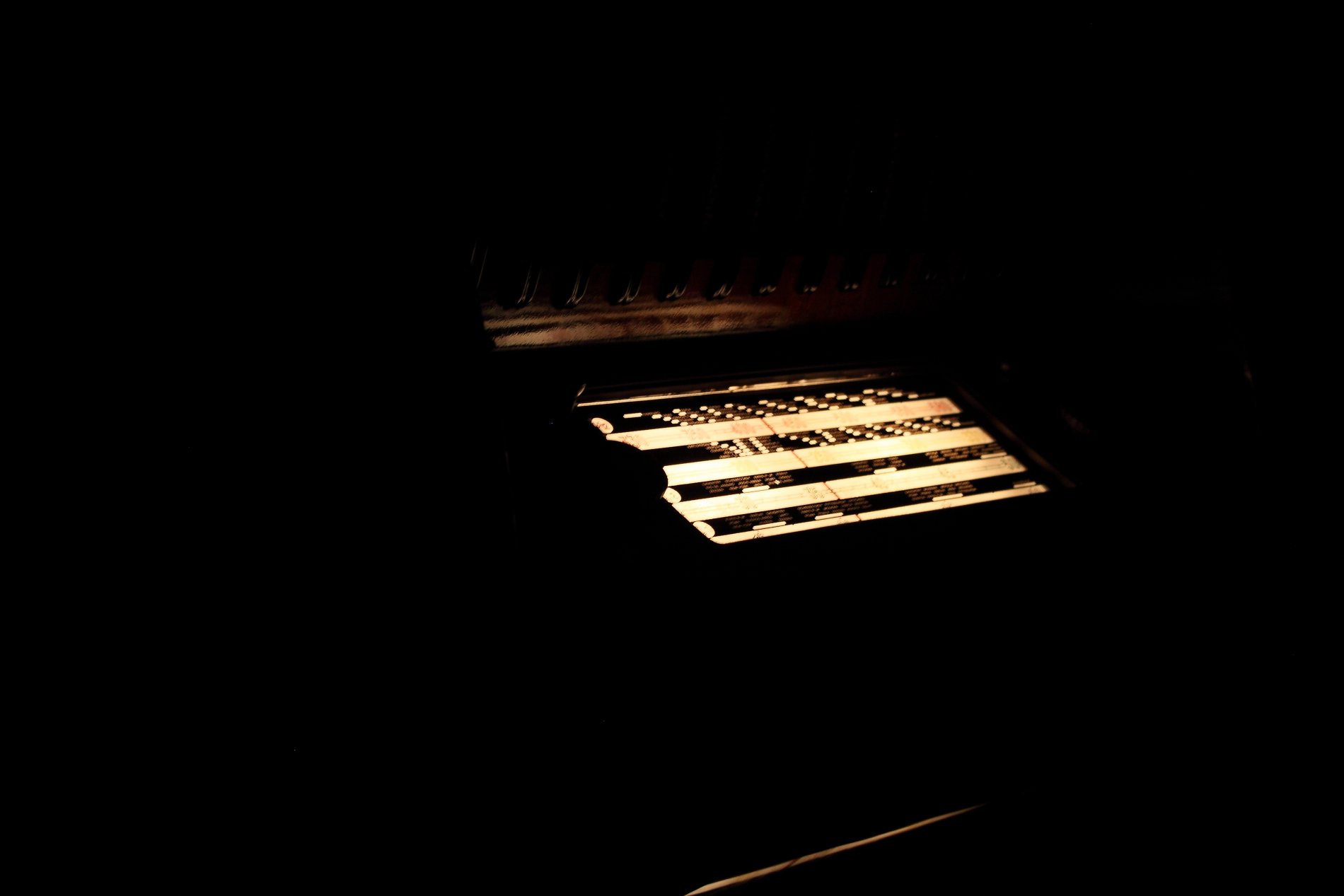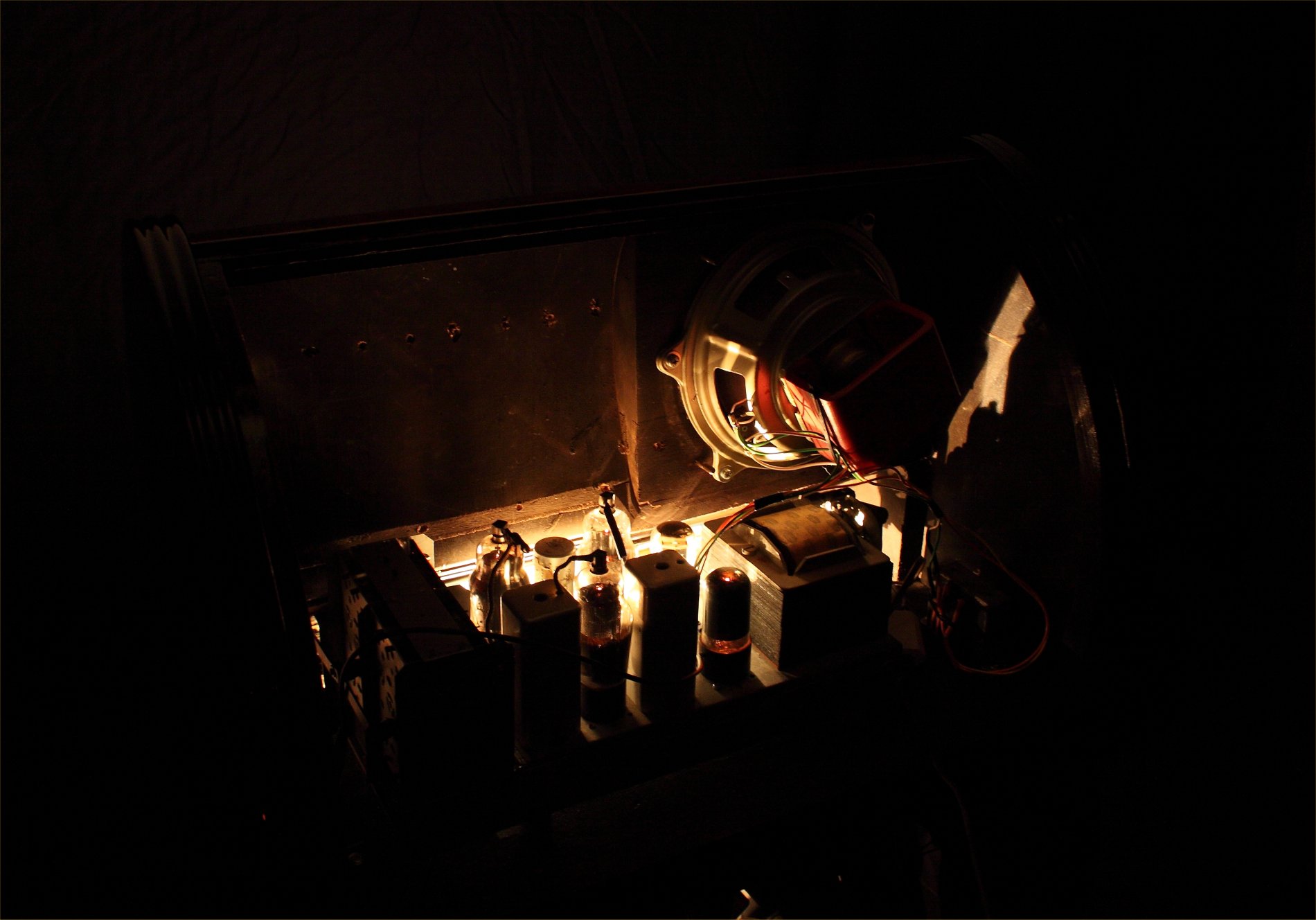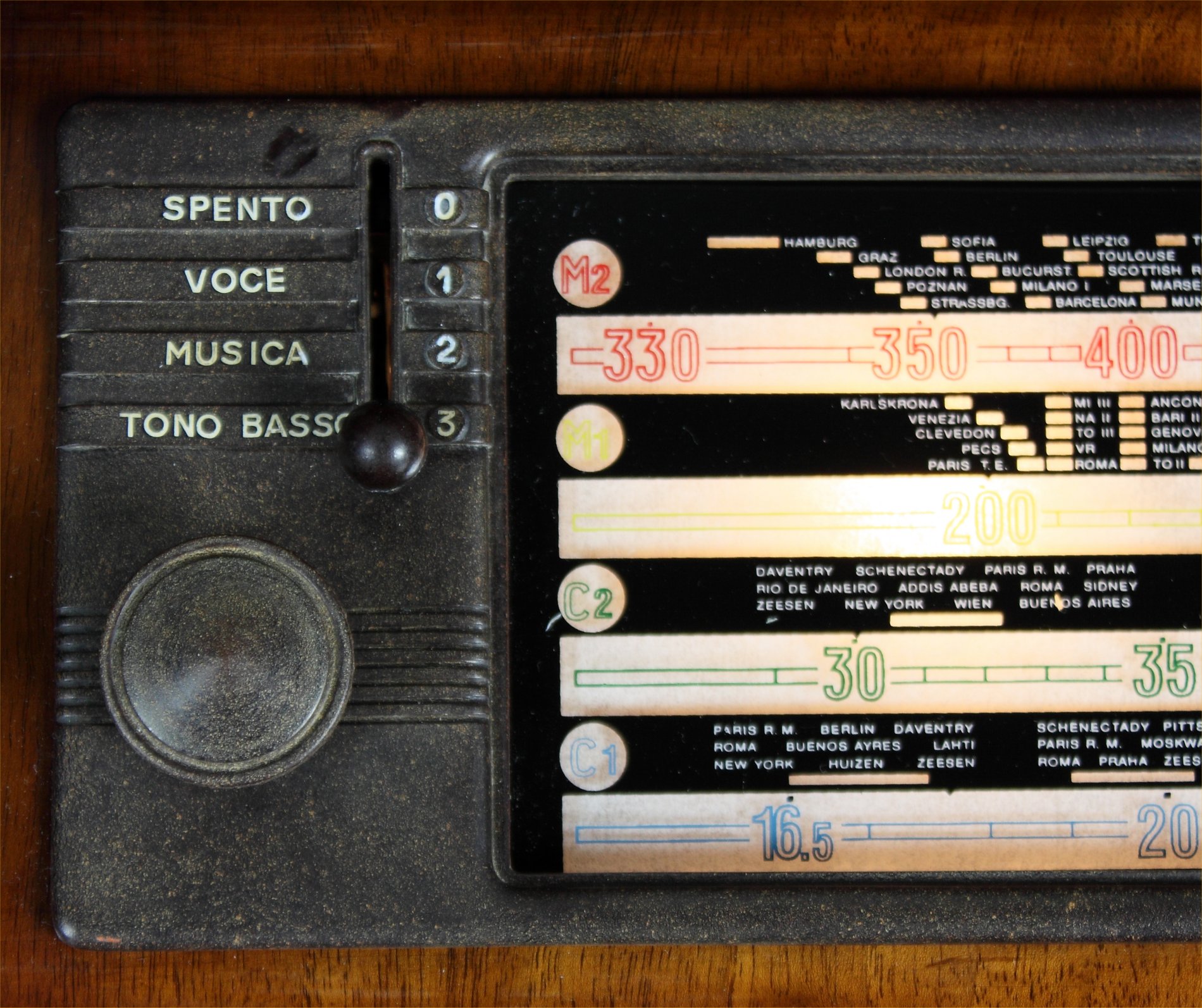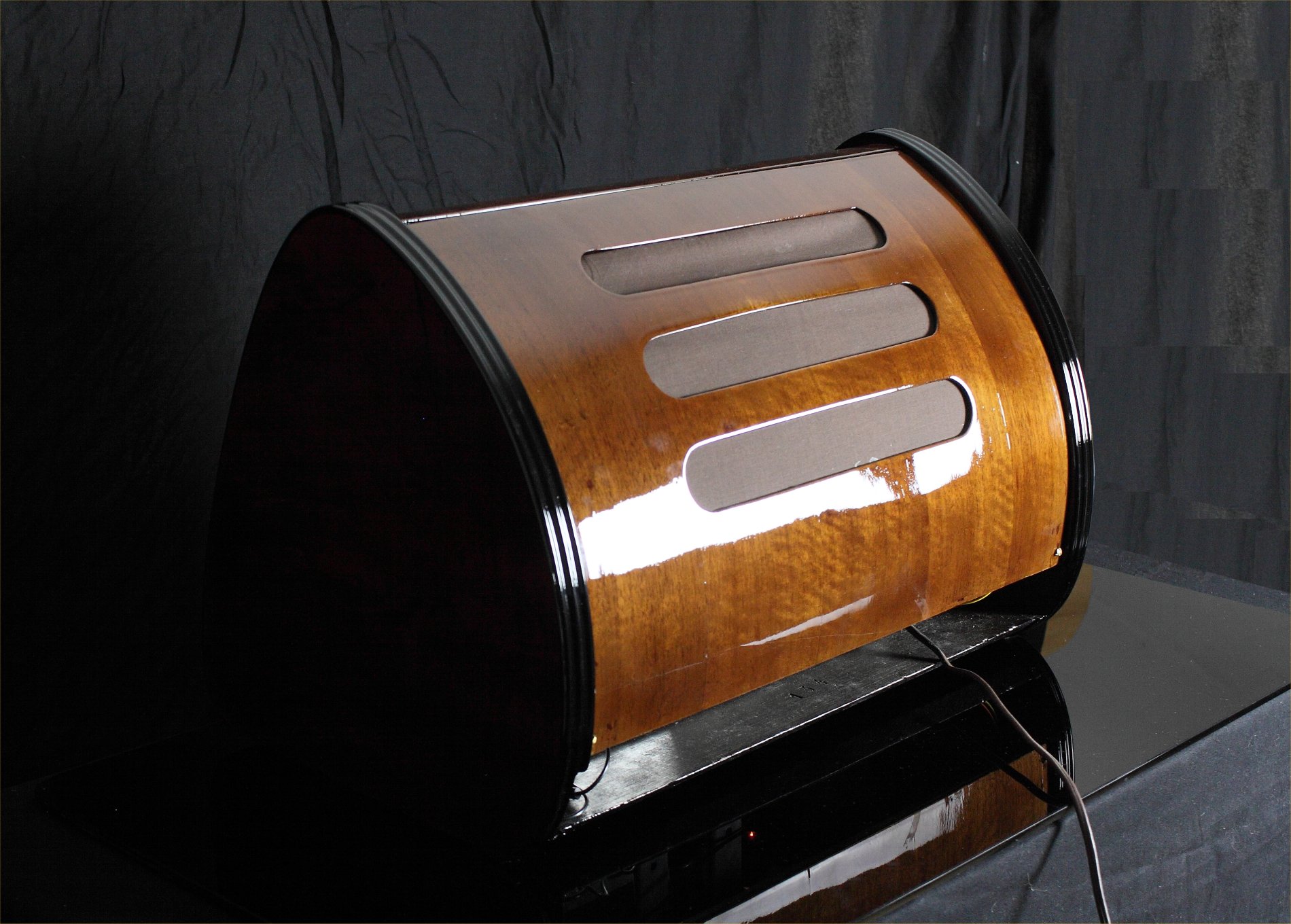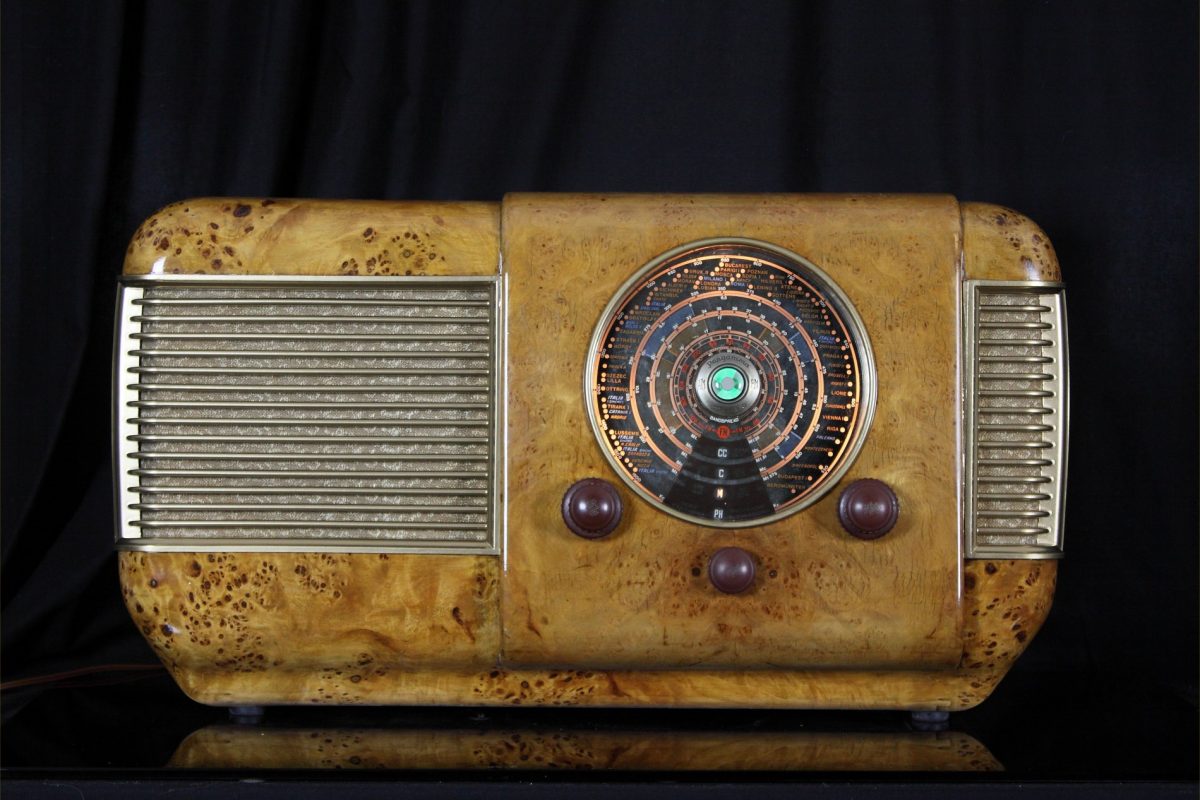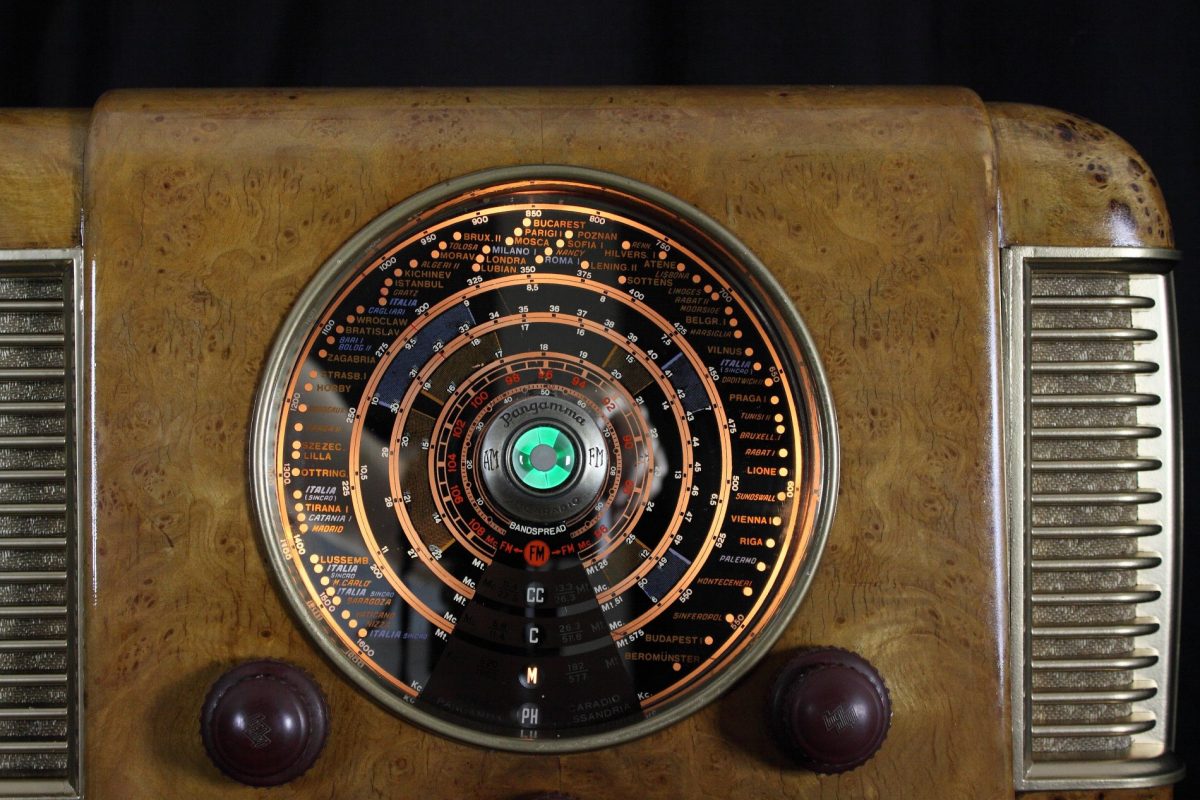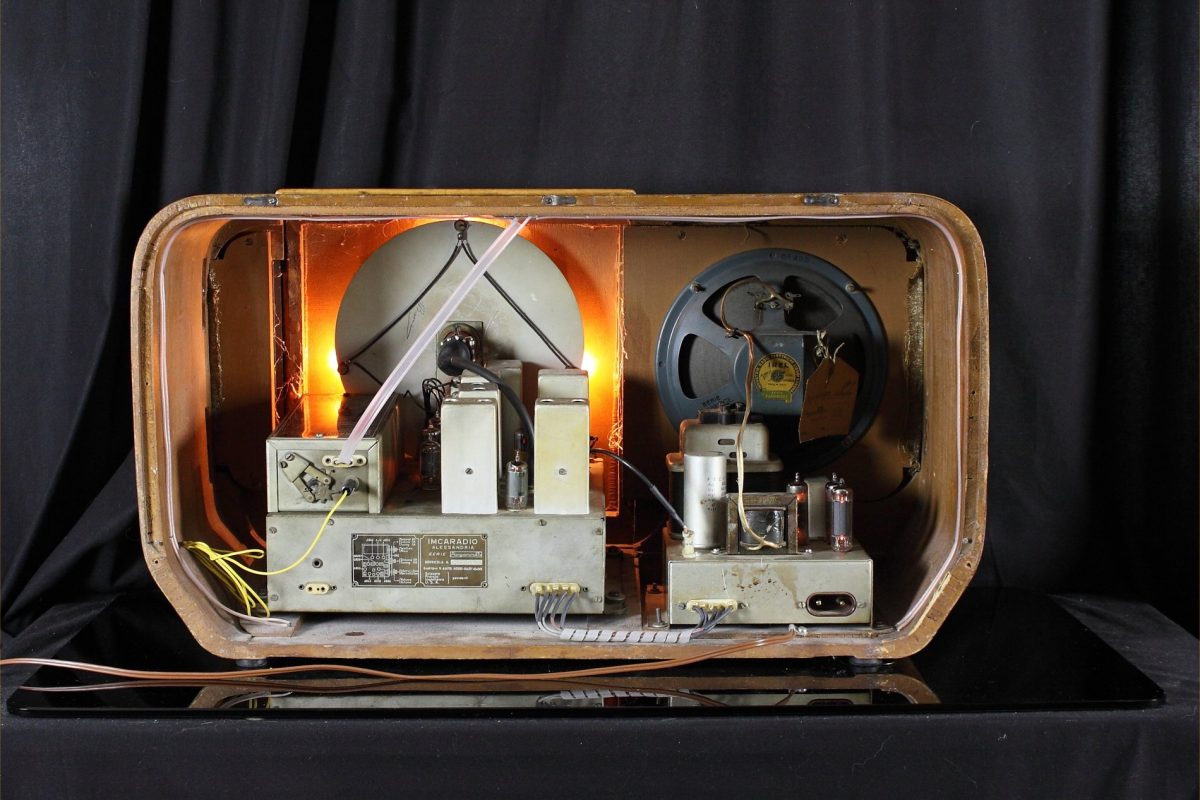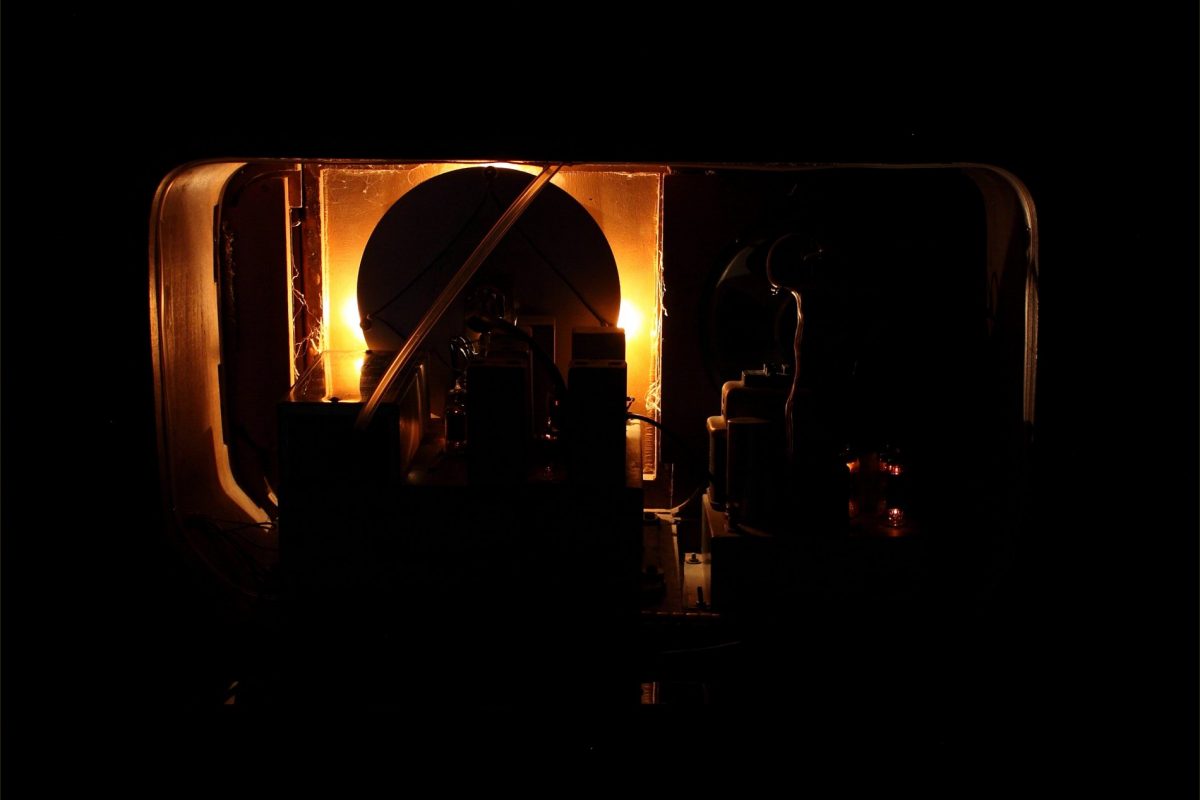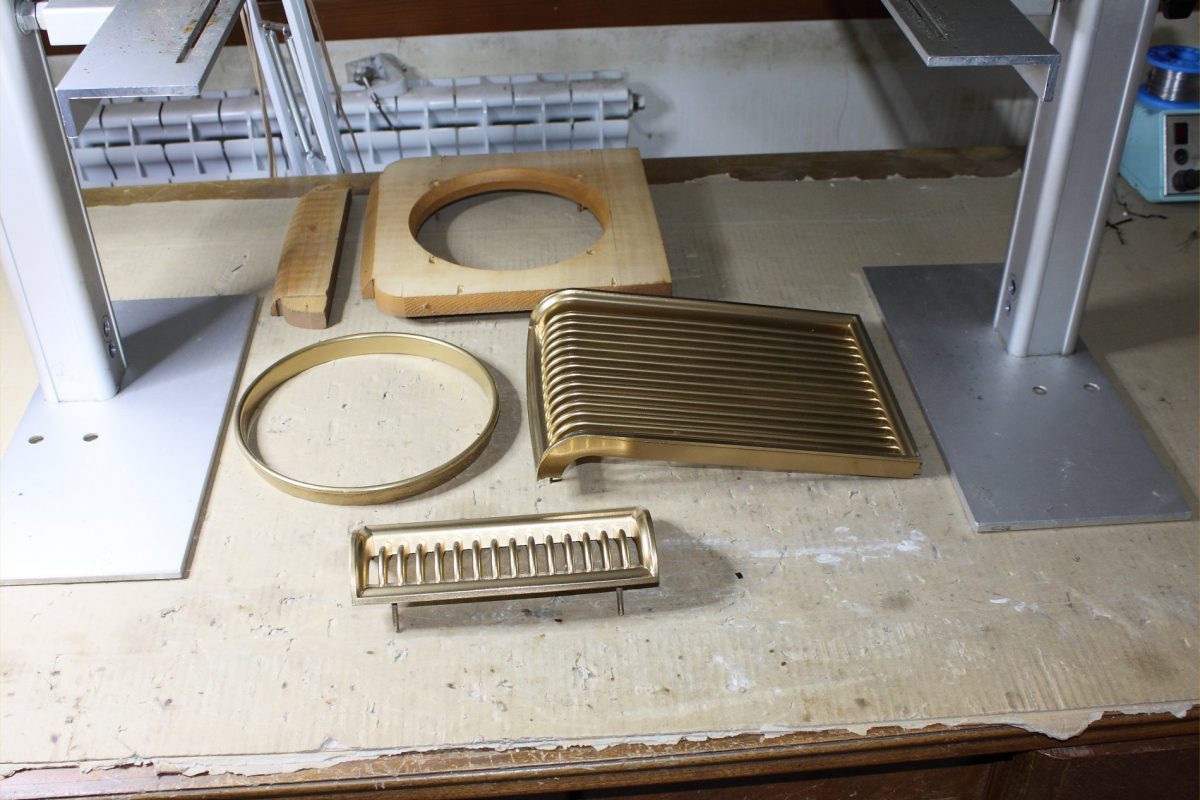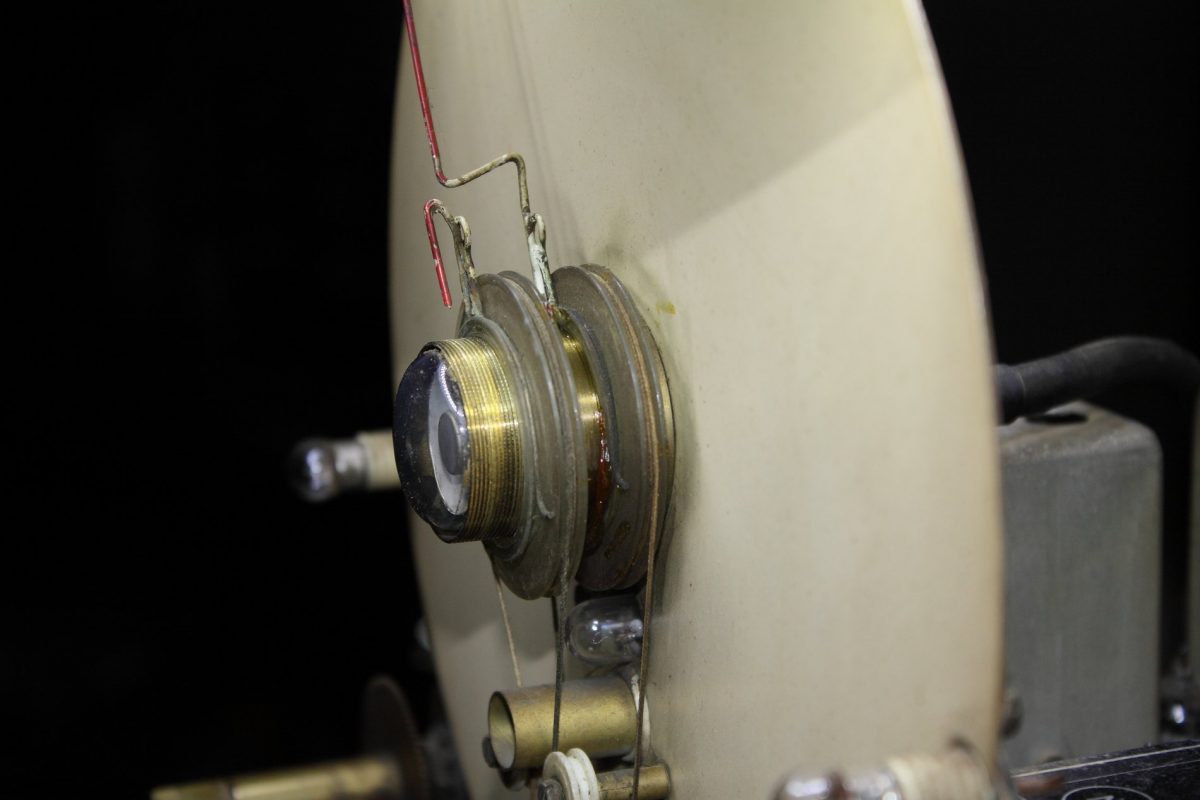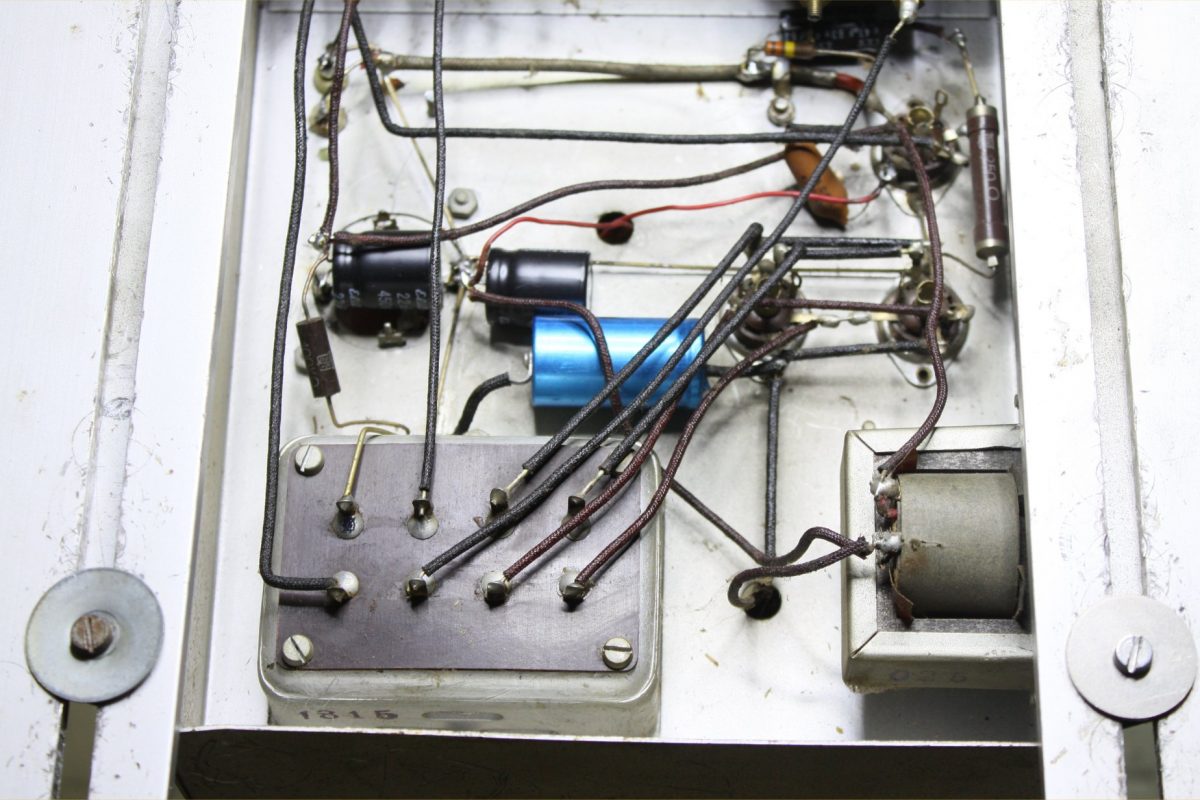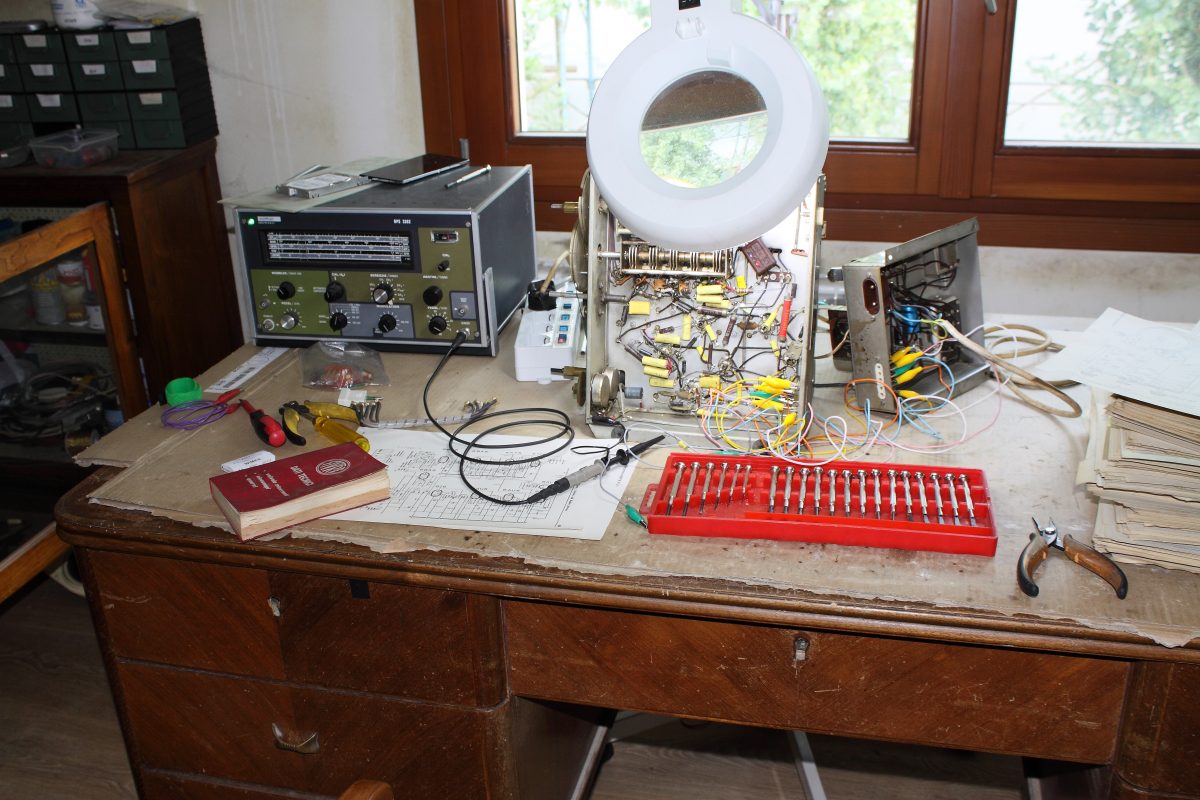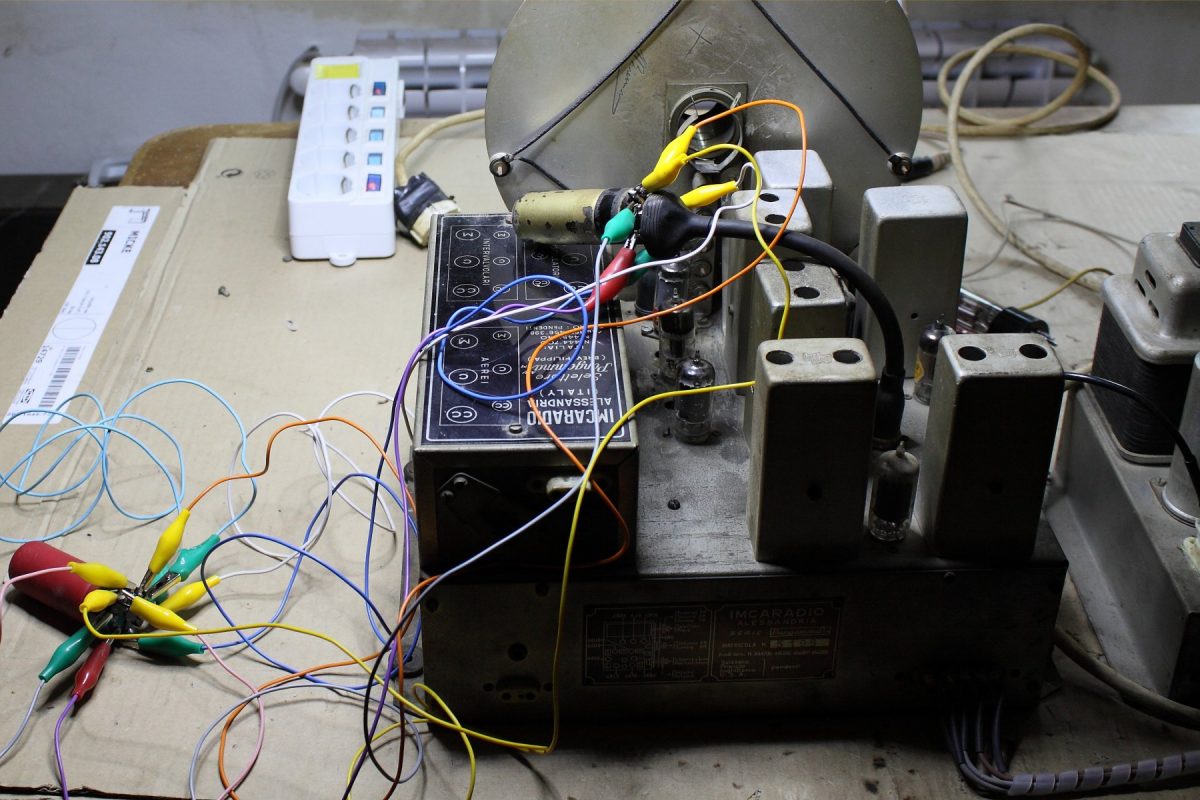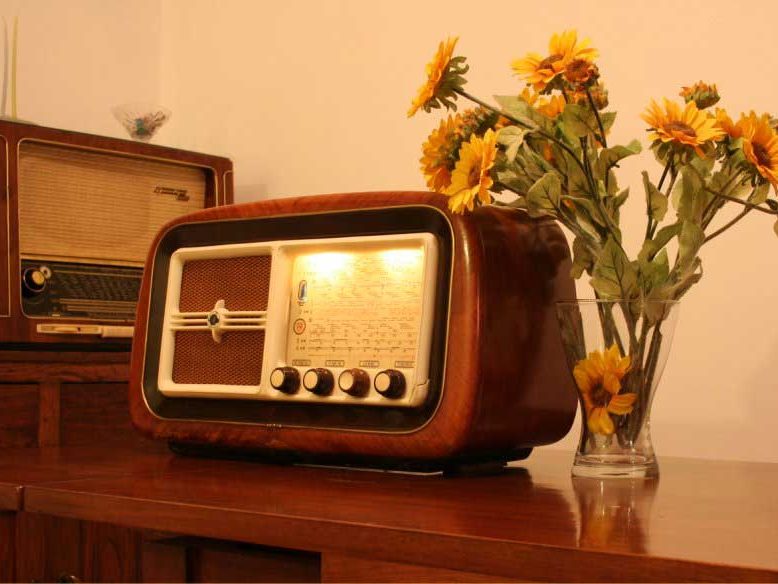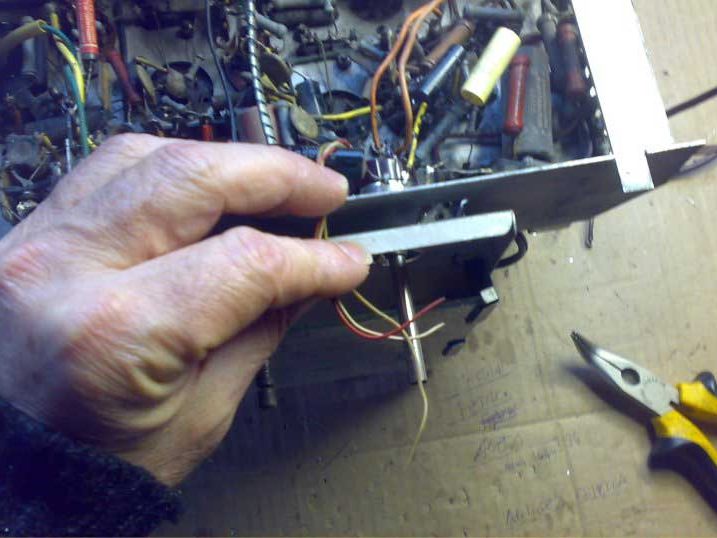 italian radios - en
italian radios - en
Imcaradio Multigamma IF92 – en
- by giovanni
IMCARADIO MULTIGAMMA IF92
IMCARADIO MULTIGAMMA IF92 RUNNING
Imcaradio Multigamma IF92
 Kingdom of Italy - 1939
Kingdom of Italy - 1939
The monthly salary of a worker is 250 lire, 1000 is that of a top executive.
Eng. Italo Filippa's IMCARADIO launches the MULTIGAMMA IF92 on the market at the modest price of 7500 lire.
This first information clarifies who the device was designed for and how many items were commercialized.
If there were still some doubts, the commercial of the time reads:
Impressive and of high musical quality 9-valve Radiophone.
In High Frequency the characteristic Multigamma chassis provides high sensitivity, which develops in a Low Frequency realized with the most modern valves and with patented phone circuit, which powers two giants electrodynamics loudspeakers with very light cone.
All IMCARADIO production aims for luxury and exclusive technological refinement, and the IF92 Multigamma is a magnificent expression of it.
The most important feature of this device is the Selection of the 8 bands by a Rotating drum. Registered patent of Imcaradio. Such system will be used several years later by other manufacturers around the world on the most prestigious multigamma models, such as Grundig in its Satellit series, Sony, Panasonic etc.
Different display for each range.
Two Class A power stages, each composed of a 6V6 which drives its own loudspeaker.
Illuminated Tuning Indicator with hand Weston-Imca.
Illuminated Precision-clock.
Ignition with pull-out key.
Inside the cabinet there are two chassis, one with the power supply and the other with the section and the two Low Frequency amplifiers.
The cabinet is very sturdy, as it weighs the tune of 70 Kg and no vibrations or resonances, deriving from the two large loudspeakers, are detected. It is covered with refined high-quality wooden compositions.
When the device is integrated with modern information-transfer technology, via cable or Bluetooth, the sound is magnificent.
Listening on this radio to old 78 rpm records is a real blast from the past. A past that some of us relive, but that most get to know for the first time. And it is a pleasant meeting with our roots.
The songs of the test playlist were chosen with an unusual criterion. I looked for songs that were probably listened to on this radio “when it was still young”. Only the last song is modern and it was included in the playlist in order to enhance the acoustic qualities of this device.
The recording quality of such songs is not excellent, sometimes very bad, but their charm is undeniable. Have a good listening!
The first song, entitled “L'Orgia”, is taken from the collection “Soirées Musicales”. A series of arias and ditties composed in 1830 in Paris by Gioacchino Rossini. It is a series of lovely transpositions of poems adapted to chamber music. Rossini managed to maintain the poetic form, the drama or the joy, by wisely dosing the chromatism and the rhythmic. Small masterpieces.
The second song is the “Tango delle Capinere” composed by Cesare Alberto Bixio on lyrics by Bixio Cherubini, brought to success by Aurelio Cimato, aka Gabrè. The beautiful recording I propose is the one played by Luciano Tajoli. This tango was written in 1928. Just like several songs of the time, it aimed at dignifying the work of the many “blackcaps”, who did the world's oldest job.
The third song is from the “Rigoletto” by Giuseppe Verdi. It is the famous aria “La donna è mobile” interpreted by the great Enrico Caruso. This is a recording from the early 1900s. The work, inspired by the drama “Le roi s'amuse” by Victor Hugo, was meant to be represented for the first time at the Fenice theatre in Venice with the title “La Maledizione” (by Vallier).
But in 1850 the Military Governor Cavalier de Gorzkowski forbade its representation. Even the name of the main character Triboulet, which could recall the ideas of suffering and tribulation, was Italianized in “Rigoletto”. Finally, after several adaptations, it was represented in 1851 and it was a great success.
The fourth piece is “L'Ottobrata”, taken from “Feste Romane” of 1928, one of the most important works by Ottorino Respighi (Bologna 1879 - Rome 1936).
After 1860 there was an opening towards the culture and the music from across the Alps. Before that time, it would have been considered almost a betrayal of the nation. The first great Italian musician sensitive to these new artistic trends was Respighi, who attended the teachings of Rimsky-Korsakof.
The influence of the great Russian master can be recognized in works such as “Le fontane di Roma”, “I pini di Roma” and “Feste romane”.
The last song, among those that this radio has certainly already known, won the Sanremo festival in 1958. “Nel blu dipinto di blu”, sung by Domenico Modugno. An important song in the history of Italian music, which consecrates the advent of the so-called “yellers”, including Tony Dallara, Adriano Celentano, Little Tony, Mina, just to name a few.
It represented a drive towards life for those Italians who, in those years, did not manage to emerge despite the economic boom.
The last song allows, instead, to appreciate the acoustic qualities of the Imcaradio IF92. It is the well-known “Euphoria” by the Swedish singer Loreen.
It is a very beautiful, award-winning song that has sold millions of copies. Very well recorded and arranged. Loreen's voice is fascinating and mysterious. Somehow the song actually reminds of Sweden.
-
BLUETOOTH
Bluetooth receiver embed
-
MULTI PLATFORM CONNECTION
Each radio is equipped with a cable for connection to any digital device.
TUBESOUND IMPROVEMENT
- Bluetooth receiver embed - The unit is equipped with a BLUETOOTH receiver powered directly by the receiver power supply. This makes it possible to control the amplifier from any external digital device as an IPAD, a Smartphone, or a sophisticated multimedia station. So you can hear your preferred web station or your lossesless file without cables on the room. Wireless Receiver can be equipped upon requests.
- Multi Platform Connection - A customized adaptation cable to connect any digital device as Iphone, Smartphone, Laptop, CD Player etc. will be provided with this radio. This special cable suits the different impedances between the modern equipment and the receiver. Furthermore the two stereo channels flow into one without increasing the load to the input unit.
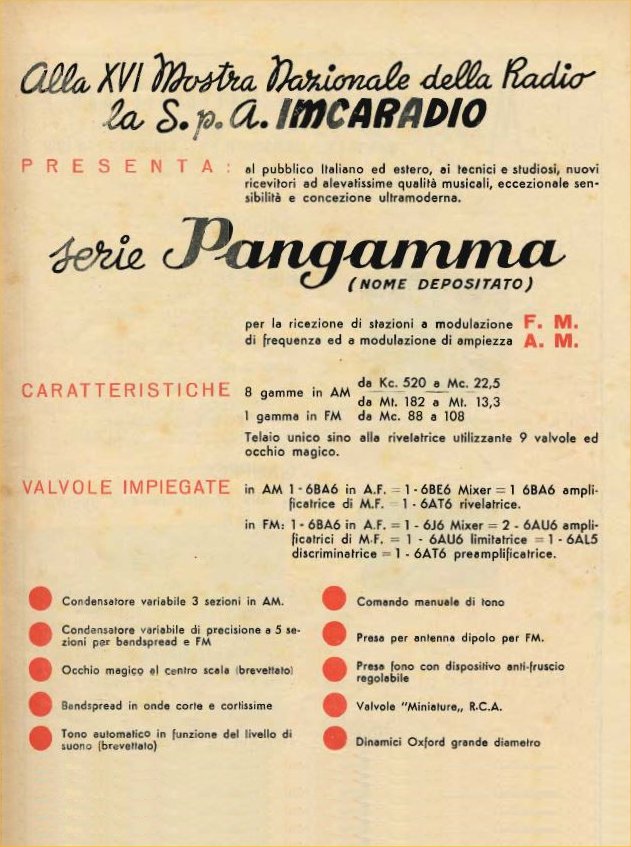
HISTORY
In 1932, the engineer Italo Filippa founded the IMCA, “Industria Meccanica Cartonaggi e Affini” (Mechanical Industry for Cardboard and Cardboard derivated products), in Alessandria.
In 1935 Filippa, passionate radio amateur, founded the IMCA RADIO Spa with the intent to start a production of luxury appliances.
The company also specializes in the construction of variable capacitors and range switches.
Eng. Filippa also patents a series of devices that he plans on using in his receivers, including a rotating drum RF section that allows for extremely precise brushing of frequencies, elevating the quality of his radios to an almost professional level.
In 1936 the models IF 65 and IF 78 are presented. (I would say that IF stands for Italo Filippa)
In 1937 the successful ESAGAMMA series was released.
In 1949 the first PANGAMMA series was presented. equipped with FM.
The company will also produce military equipment, separate components, and televisions.
In 1960 it was absorbed by Radiomarelli, which continued to produce IMCARADIO branded equipment, replacing the abbreviation IF with RID, until 1962 when it ceased production.

MAIN FEATURES
Year of production: 1939
Wavebands:
Long Waves (OL) 275 - 155 KHz
Medium Waves (OM1) 1600 - 870 KHz
Medium Waves (OM2) 900 - 490 KHz
Short Waves (OC1) 4,57 - 7,1 MHz
Short Waves (OC2) 7 - 11 MHz
Short Waves (OC3) 10,6 - 16 MHz
Short Waves (OC4) 15,15 - 23 MHz
Short Waves (OC5) 21 - 30 MHz
Operating voltage (CA): 110; 125; 160; 220 Volt
2 Fullrange Electrodynamic Loudspeakers
Dimensions (LHP) : 560 x 1010 x 880 mm / 22.1 x 39.8 x 34.6 inch
Net weight: 73,4 kg
9 Tubes: 6D6, 76, 6D6, 6Q7, 75, 2 x 6V6, 5Z3, 6L7

TUNING
The tuning control are two.
The first is the fast control and it is activated by the tuning knob located in the group of four knobs in line.
The second is the fine tuning control and it is carried out by acting on the big horizontal knob placed below the other four knobs.
The two controls are mechanically connected.
HF GROUP
The High Frequency Group is composed of a rotating drum that can be extracted from chassis as it has no fixed connections to the rest of the radio. All the contacts are of high precision.
To each range corresponds a display, as shown in the photos.
The entire High Frequency section is built with high-quality components, such as the air ceramic compensator and the Ducati capacitors.
The CAV (Automatic Volume Control) is very efficient, even on very weak stations. The result is a stable, fading-free reception.

CLOCK AND TUNING INDICATOR
The tunng indicator consists of an extremely elegant electromagnetic milliamperemeter.
A small pommel located in the upper part of the cabinet, under the cover of the turntable, controls by an arm the graceful mechanical clock.
From this pommel the position of the hands can be adjusted and the watch can be loaded.

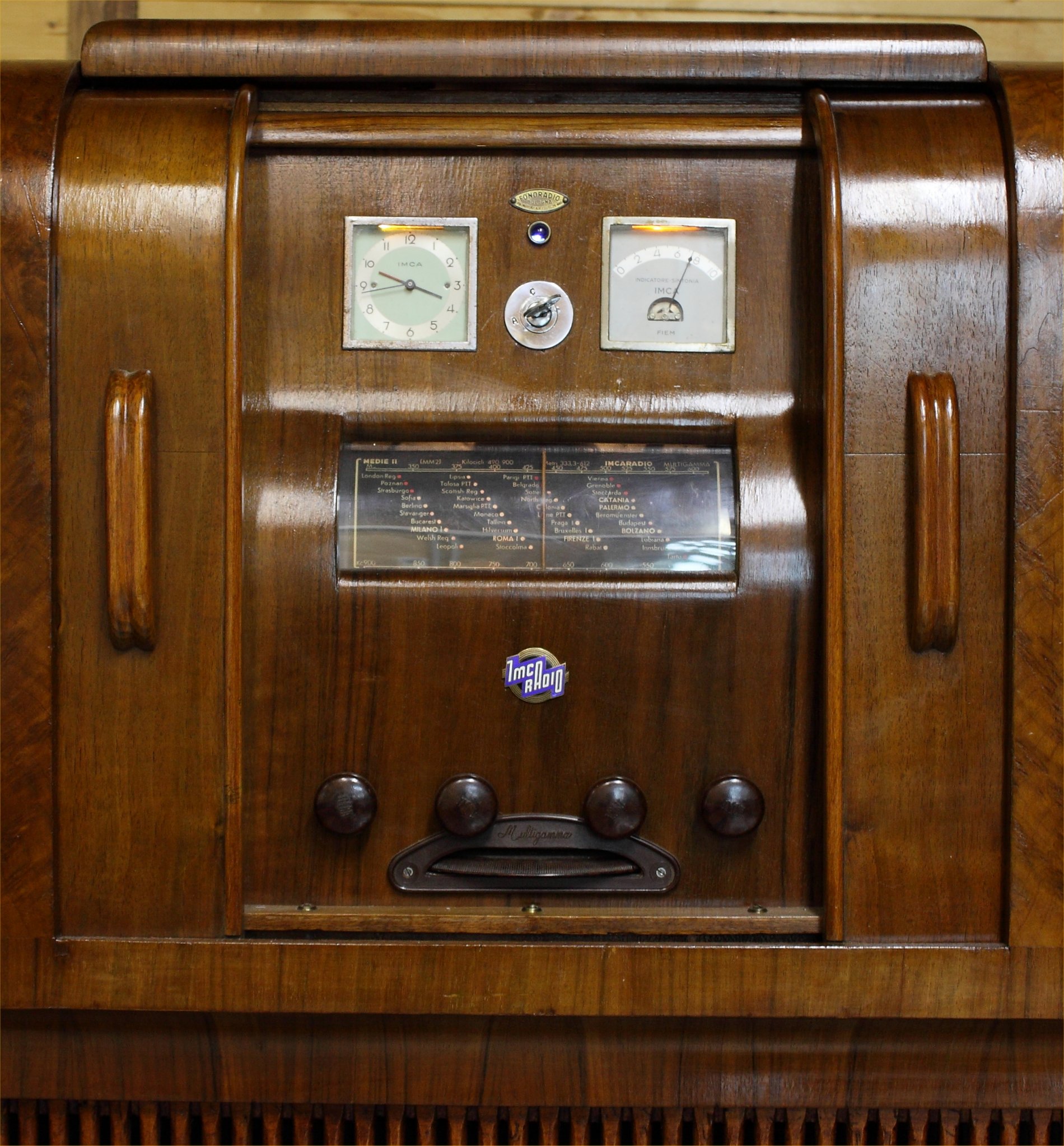
CONTROL PANEL
The device can be activated by turning the key. The movement reminds that of the ignition of the Lancia Astura.
On the left of the key there is the clock, in the middle the power light, on the right the tuning indicator.
Below. The first knob from the left is the Tone Control.
The second is the Volume Control which also works as the Input Selector.
- The Radio Input is selected in the regular position .
- The Turntable Input is selected in the extracted position.
The third knob is Normal Tuning Control. This knob is mechanically connected to the large horizontal wheel placed below the other knobs, which controls the Fine Tuning.
The last knob on the right controls the Drum Band Switch. At each change of range the display of the selected band is displayed.


